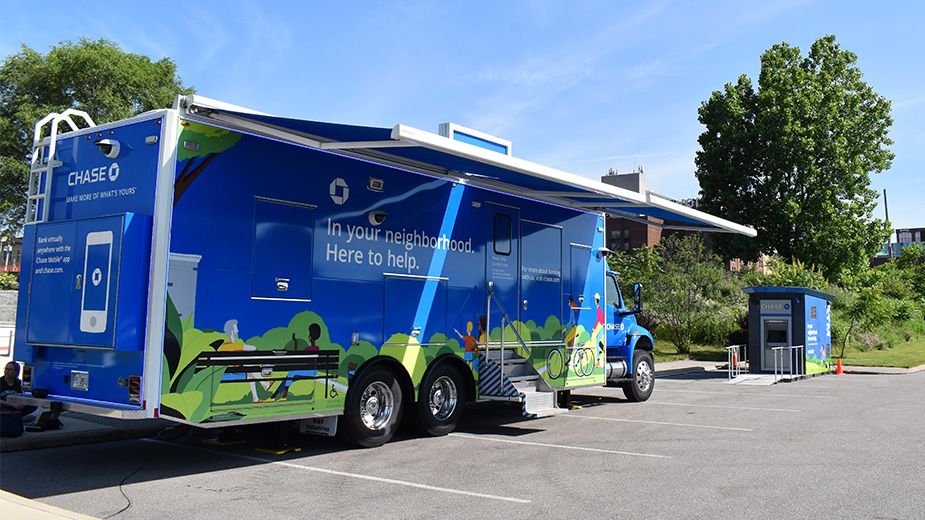Businesses Don’t Slow on Borrowing as Rates Rise
YOUNGSTOWN, Ohio – In an improving economy and tight labor market, Ron Musilli Jr. finds himself in a pinch.
His business, McHenry Industries, is a wholesale sign manufacturer that sells to other businesses across the country. As these businesses are more confident in the economy, they are rebranding themselves and spending more money on new signage.
Musilli’s problem is that he has a greater workload and not enough skilled workers to do the job.
“Our sales are up this year and it seems like things are good, but just finding the right employees is a trouble,” says Musilli, president of the Austintown company. “The last two years we’ve seen an influx in our work from corporate buying and acquisitions, which leads us to help rebrand the signage of hospitals and banks.”
To help with the workload, Musilli turned to Home Savings Bank, which has worked through similar situations involving many of its commercial customers.
“The challenge right now that we’re hearing from nine out of 10 businesses is they’re looking to hire, but can’t find people to hire,” says Josh Toot, vice president of commercial banking at Home Savings. “They have the work. They have the demand. But they don’t have the people.”
In July, Home Savings provided a commercial loan to McHenry Industries for the purchase of a new CNC router machine to relieve some of the workload.
“We’re buried and had some antiquated equipment we wanted to upgrade and our capacity required us to do so,” Musilli says. “The new machine will cut parts and pieces of the sign that will be welded together to make signage for companies nationwide.”
McHenry Industries has 68 employees and is looking to hire 15 more, the president says. With the purchase of the new machine, the company will need to hire one operator and a graphic designer. The machine is expected to arrive by the end of August.
“The equipment purchases are really to create an efficiency,” Toot says. “They’re struggling to bring in new employees, so what they do is upgrade equipment and tech. And what that does is, instead of having four guys to run a piece of machinery, now they only need one.”
The confidence in the economy right now is a combination of factors, says Frank Hierro, Mahoning Valley regional president at Home Savings. He points to lower income tax rates, increased spending by consumers and low unemployment.
“Businesses are willing to make the commitment to get a return over the long term,” he says. “That’s usually what they’re looking at when they’re building or purchasing a substantial piece of equipment or investing in technology. They don’t get that return in a year or two. It takes five to 10 years to fully recoup your investment and get an adequate return.”
PNC Bank also is seeing business growth resulting from December’s tax reform legislation as well as the tight labor market that’s adversely impacting its commercial customers.
“They feel more optimistic on growing their top lines, are able to meet projections that feel achievable now and are able to invest in their company,” says Ted Schmidt, PNC Youngstown regional president. “Some are buying new equipment that’s more efficient in a tight labor market. You have to grow, but you need to become more efficient with equipment and still be able to produce more goods with the same amount of people.”
Even as interest rates start to rise, it has not slowed down businesses from borrowing. The Federal Reserve’s most recent interest rate increase took place June 13, bringing the benchmark rate to a range of 1.75% to 2%. Another rate hike is expected in September.
“As rates have started to rise, we have not seen that impact the need of borrowing,” Schmidt says. “Companies have looked harder at fixed rates today and don’t want to run the risk of a floating loan.”
Schmidt sees a lot of companies increasing their working capital lines of credit to support organic growth. He’s also received more requests from clients to manage cash flow through online treasury products to collect receivables, or to use a purchasing card for payables.
A product he sees decreasing in demand each year is the use of checks, as a lot of payments are done electronically. “I don’t know if checks will go away completely, but we’ve seen a significant decrease,” he says.
Most of the commercial real estate loans at Mercer County State Bank have been for customers buying existing properties or refinancing, says chief lending officer Ron McNeely. Loan growth at the bank has increased over last year and higher interest rates have not yet dampened demand for loans.
“Short-term rates may rise faster than long-term rates but we see them all rising,” McNeely says. “Some of the increased costs of borrowing due to rate increases have been offset by the tax reform that lowered people’s income taxes.”
However, McNeely notes businesses won’t see the full impact from tax reform until next year.
Mercer County State Bank offers agricultural loans to the large farm community surrounding its 11 branches. Most farmers are using loans for equipment upgrades and purchases, but have struggled this year to borrow because of low dairy and grain prices, McNeely says.
He fears the tariffs imposed by President Donald Trump could negatively impact the agricultural community, but it hasn’t happened yet.
Later this year, farmers may experience problems, McNeely says, because it could be more difficult to sell grains and dairy products to foreign consumers, creating a surplus here and driving prices down.
Likewise, Farmers National Bank Regional President Tim Shaffer hasn’t seen a slowdown in lending activity due to interest rate increases and tariffs, but “if it does happen it might show up in our agricultural portfolio first,” he says.
Industries Shaffer sees growing right now are transportation, manufacturing and health care, particularly senior care. General contractors are also busy.
“Transportation is interesting because it’s an indicator industry that’s had good economic growth and hasn’t seen a slowdown yet,” he says. “A lot of new equipment is being purchased and deployed.”
The transportation industry is comprised of trucking companies and retailers that sell to the trucking industry, he notes.
Farmers is seeing greater demand for increases in customers’ existing lines of credit, as well as new lines of credit, which are reflective of how busy customers are.
Term-loan financing is in high demand for new equipment and Shaffer is seeing a balance between equipment being added and replaced.
Commercial real estate this year is mostly acquisition opportunities and not a lot of new construction, Shaffer says.
“Our local businesses and those operating regionally and nationally are seeing a strong demand for goods and services and enjoying good economic activity,” he says. “It seems there’s a sense of optimism that will continue, but also a sense of variables that could have an impact, like the tariffs.”
Copyright 2024 The Business Journal, Youngstown, Ohio.


